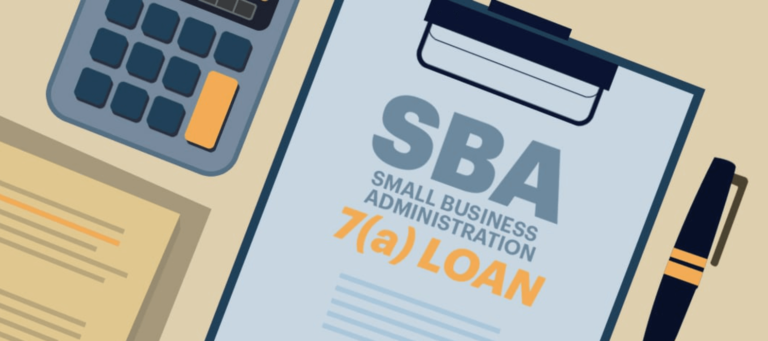Learn All About What is a Direct Unsubsidized Loan?
Student loans have become an integral part of financing higher education, providing students with the means to pursue their academic goals. One common type of student loan is the direct unsubsidized loan. In this article, we’ll delve into the nuances of what is a direct unsubsidized loan, exploring what they are, how to apply, and crucial details every borrower should know.
Understanding Direct Unsubsidized Loans
Direct unsubsidized loans are federal student loans designed to assist students in covering the costs of education. Unlike subsidized loans, the government doesn’t pay the interest on these loans during certain periods, making understanding their features essential for prospective borrowers.
Definition and Purpose
Direct unsubsidized loans are loans not based on financial need. This means that students can qualify for these loans regardless of their financial situation. The primary purpose of these loans is to help cover the gap between the cost of education and other financial aid received.
Key Features and Eligibility Criteria
To be eligible for a direct unsubsidized loan, students must be enrolled in a qualifying educational program at least half-time. The loan amount is determined by the cost of attendance minus any other financial aid received. Understanding these features is crucial for students considering this financial option.
Application Process
Securing a direct unsubsidized loan involves a straightforward application process. Knowing the steps to apply and the required documentation can streamline the financial aid journey for students.
How to Apply for a Direct Unsubsidized Loan
The application process begins with completing the Free Application for Federal Student Aid (FAFSA). This form determines eligibility for various federal student aid programs, including direct unsubsidized loans. Prospective borrowers need to submit the FAFSA before the specified deadlines to ensure timely processing.
Required Documentation and Deadlines
Accurate and timely submission of required documentation is crucial. Students should be aware of deadlines for submitting the FAFSA, as missing these deadlines may impact eligibility for certain aid programs.
Loan Limits and Interest Rates
Understanding the borrowing limits and interest rates associated with direct unsubsidized loans is essential for making informed decisions about financing education.
Explanation of Borrowing Limits
Direct unsubsidized loans have set borrowing limits depending on the student’s academic level. Knowing these limits helps students plan their finances and explore additional funding sources if needed.
Overview of Interest Rates and Their Implications
Interest rates for direct unsubsidized loans are fixed and set by the government. Exploring the implications of these rates on long-term repayment can aid borrowers in making sound financial decisions.
Repayment Plans
As graduation approaches, borrowers need to be well-versed in the available repayment plans for direct unsubsidized loans. Each plan has its pros and cons, and choosing the right one is crucial for successful loan repayment.
Available Repayment Plans for Direct Unsubsidized Loans
Federal Direct Loan Program offers several repayment plans, including Income-Driven Repayment (IDR) and Standard Repayment. Understanding the differences between these plans ensures borrowers select the one that aligns with their financial circumstances.
Pros and Cons of Each Plan
Examining the advantages and disadvantages of each repayment plan empowers borrowers to choose the most suitable option based on their income and financial goals.
Grace Period and Deferment Options
Upon graduation, borrowers enter a grace period before they start repaying their direct unsubsidized loans. Understanding this period and available deferment options is crucial for managing post-graduation finances.
Explanation of Grace Period After Graduation
Direct unsubsidized loans typically have a grace period of six months after graduation. During this time, borrowers are not required to make payments, providing a transitional period to secure employment and establish financial stability.
Deferment Options and When They Apply
In certain situations, borrowers may qualify for deferment, temporarily postponing loan payments. Exploring deferment options and understanding when they apply can help borrowers navigate unexpected financial challenges.
Interest Accrual during School and Deferment
One distinctive feature of direct unsubsidized loans is the accrual of interest during various periods. Managing this interest and employing strategies to minimize its impact is vital for borrowers.
How Interest Accrues During Different Periods
Unlike subsidized loans, interest on direct unsubsidized loans accrues during the entire loan period. This includes the in-school period, grace period, and deferment. Understanding when interest accrues helps borrowers plan for future repayments.
Strategies to Manage Interest Accumulation
Borrowers can take proactive steps to manage interest accumulation, such as making interest payments during the in-school period or considering early loan repayment. Implementing these strategies can result in long-term savings.
Loan Consolidation
For those with multiple federal student loans, consolidation can simplify the repayment process. Understanding the benefits and process of loan consolidation is crucial for borrowers managing multiple loans.
Overview of Loan Consolidation Benefits
Loan consolidation combines multiple federal student loans into a single loan with a fixed interest rate. This simplifies repayment by creating a single monthly payment.
How to Consolidate Direct Unsubsidized Loans
Borrowers interested in consolidation need to follow a straightforward process. It’s important to consider the potential impact on interest rates and repayment terms before opting for consolidation.
Loan Forgiveness Programs
Certain circumstances may qualify borrowers for loan forgiveness programs. Understanding the eligibility criteria and application process is crucial for those seeking debt relief.
Introduction to Forgiveness Programs
Public Service Loan Forgiveness (PSLF) and Teacher Loan Forgiveness are examples of programs that forgive a portion of the remaining loan balance for qualifying borrowers. Exploring these options can provide significant financial relief.
Eligibility Criteria and Application Process
Each forgiveness program has specific eligibility criteria and application processes. Meeting these criteria and following the correct procedures is essential for successful loan forgiveness.
Impact on Credit Score
Borrowing student loans, including direct unsubsidized loans, can have implications for credit scores. Knowing how these loans impact credit and tips for maintaining a positive credit history is crucial for financial well-being.
How Direct Unsubsidized Loans Affect Credit Scores
Student loans influence credit scores, and timely repayment is essential for maintaining a positive credit history. Understanding the factors that impact credit scores can empower borrowers to make informed financial decisions.
Tips for Maintaining a Positive Credit History
Simple actions, such as making on-time payments and monitoring credit reports, can contribute to a positive credit history. Implementing these tips helps borrowers build a strong financial foundation.
Common Misconceptions
Misunderstandings about direct unsubsidized loans can lead to confusion. Addressing common misconceptions and clarifying terms and conditions ensures that borrowers have accurate information.
Addressing Common Misunderstandings About Direct Unsubsidized Loans
From interest rates to eligibility criteria, this section aims to debunk common myths and provide clarity on the terms associated with direct unsubsidized loans.
Clarifying Terms and Conditions
Borrowers benefit from a clear understanding of the terms and conditions of their loans. This section provides detailed explanations, ensuring that readers are well-informed.
Alternatives to Direct Unsubsidized Loans
While direct unsubsidized loans are a common financial aid option, exploring alternatives is prudent. This section discusses other financial aid options and compares their benefits and drawbacks.
Exploring Other Financial Aid Options
Scholarships, grants, and work-study programs are alternative sources of financial aid. Understanding the differences between these options helps students make comprehensive financial plans.
Comparing Benefits and Drawbacks
Each financial aid option has its advantages and disadvantages. This section provides a comparative analysis, aiding students in choosing the most suitable form of assistance.
Real-life Stories
Sharing real-life success stories of individuals who have navigated the challenges of student loans provides inspiration and practical insights.
Success Stories of Direct Unsubsidized Loan Beneficiaries
Highlighting individuals who successfully managed their direct unsubsidized loans and achieved their academic and career goals.
Illustrating Positive Outcomes and Challenges
Realistic portrayals of both successes and challenges provide a balanced perspective. Readers can relate to the experiences of others, fostering a sense of community and shared understanding.
Tips for Responsible Borrowing
Guidance on managing student loan debt responsibly is crucial for the financial well-being of borrowers.
Advice on Managing Student Loan Debt Responsibly
From creating a budget to exploring part-time employment opportunities, this section provides practical advice for responsible borrowing.
Financial Planning for Successful Repayment
Long-term financial planning is key to successful loan repayment. This section offers tips for creating a financial plan that aligns with individual goals and circumstances. Read more…
Conclusion
In conclusion, understanding the intricacies of what is a direct unsubsidized loan is essential for any student considering this financial option. From the application process to repayment strategies, this article has covered key aspects to empower borrowers with knowledge. By making informed decisions and taking proactive steps, individuals can navigate the world of student loans successfully.
Frequently Asked Questions (FAQs)
- Is a direct unsubsidized loan the same as a subsidized loan?
- Clarifying the differences between direct unsubsidized and subsidized loans.
- How does loan consolidation impact my monthly payments?
- Explaining the potential effects of loan consolidation on repayment terms.
- Can I change my repayment plan after graduation?
- Providing information on adjusting repayment plans based on individual circumstances.
- What happens if I miss the deadline for FAFSA submission?
- Addressing the consequences of missing deadlines and potential alternatives.
- Are there any tax benefits associated with student loans?
- Exploring potential tax benefits for individuals with student loans.







